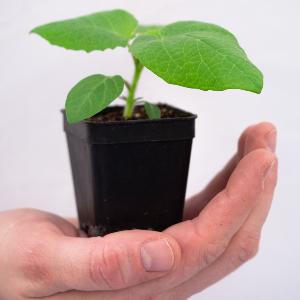How plants epigenetically regulate their chemical defences
24 Feb 2025
A new study demonstrates how plants of the nightshade family produce pharmaceutically valuable compounds and how this biosynthesis is epigenetically regulated.
24 Feb 2025
A new study demonstrates how plants of the nightshade family produce pharmaceutically valuable compounds and how this biosynthesis is epigenetically regulated.
Plants are masters at producing a huge variety of chemical substances to protect themselves against animals and pathogens. Among the hundreds of thousands of botanical compounds, many are interesting for human health due to their medicinal characteristics. Many plants of the nightshade family, for example, form so-called withanolides, a diverse group of steroids with health-beneficial properties. However, there has been little research into the biosynthesis and regulation of these compounds.
A research team led by Professor Claude Becker, geneticist in the Faculty of Biology at LMU, has now discovered a gene cluster that is responsible for the production of withanolides in the ground-cherry (Physalis grisea). Recently published in the journal PNAS, the study was a collaboration with partners from the Max Planck Institute of Molecular Plant Physiology in Golm and the University of Hohenheim. “In such gene clusters, genes encoding for enzymes that coordinate the subsequent steps in a biosynthetic pathway are organized in close proximity to each other,” explains Becker. “This ensures that they are regulated and inherited together.”

© LMU/Jessica Folgmann
In the case of the withanolide cluster, the team found a duplication in the genome, whereby the two resulting units are organized in two functionally separate domains. While one is active only in the plant root, the other is active in above-ground tissues. “What surprised us is that the separation and organization of the two units appears to be regulated epigenetically,” says Becker. Thus, the two cluster versions differ in the local structure and chemical modifications of the DNA. The researchers believe this separation allows the plant to produce slightly different chemical defenses in its above- and below-ground tissues.
Through comparative genomics, the team could also show that, while the duplication of the withanolide gene cluster is specific to the sub-family of Physalis and its close relatives, the cluster itself is highly conserved across the nightshade family but absent in the genus containing tomato and potato. “Our study provides first insights into the production of the diverse and multi-functional metabolite group of the withanolides, an essential first step for the potential development of derived alternative pesticides and novel therapeutics,” concludes Becker.
Santiago Priego-Cubero et al.: Subfunctionalization and epigenetic regulation of a biosynthetic gene cluster in Solanaceae. In: PNAS 2025